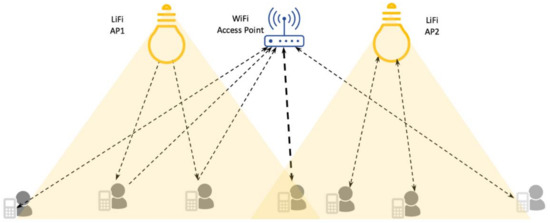

Femtosecond laser inscribed waveguide and micro-chip laser operation at 1.07 μm in Yb3+ doped germanate glass. Khalid, M., Chen, G.Y., Bei, J., Ebendorff-Heideprem, H. Microchip and ultra-fast laser inscribed waveguide lasers in Yb 3+ germanate glass. Khalid, M., Chen, G.Y., Bei, J., Ebendorff-Heidepriem, H. Dual-polarized, Monostatic Antenna Array with improved Tx-Rx Isolation for 2.4 GHz in-band full duplex applications”, published in International Journal of Microwave and Wireless Technologies, pp 1-11, 2020. Conference on Lasers and Electro-Optics Pacific Rim (CLEO-PR) (pp. 2 μm Laser Characteristics and Spectroscopic Properties of Yb 3+/Ho 3+ co-doped GPGN. Spectroscopic analysis and laser simulations of Yb 3+/Ho 3+ co-doped lead-germanate glass. Broadband fluorescence emission and laser demonstration in large mode waveguide structure in Yb 3+ doped germanate glass. Femtosecond laser induced low propagation loss waveguides in a lead-germanate glass for efficient lasing in near to mid-IR. Chen, Heike Ebendorff-Heidepreim & David G. The simulation performed showed that the proposed system remains performant for a number of users of up to 8 users with a fiber length of 5 Km.Mamoona Khalid, George Y. The obtained results indicate that the transmission quality of a SAC-OCDMA system of 3 users remains good for a fiber length of up to 25 Km and a FBG bandwidth of 0.6 nm.īased on the same SAC-OCDMA system architecture used for 3 users, the number of users was increased to 9 users. The results carried out have shown that the system performance is influenced and pending on the variation of several intrinsic factors such as: The FBG’s bandwidth the bit rate, the fiber length and the number of users.


Several simulations had been processed in order to evaluate the SAC-OCDMA system performance. These results are realized with an acceptable bit error rate \(BER < 10^ \) for users 2, 3, 4, 5 and 6, respectively. The obtained results using Optisystem network show clearly that the studied SAC-OCDMA system of three users remains efficient for fiber lengths up to 25 km at a data rate of 200 Mbits/s and a FBGs bandwidth of 0.6 nm. Different simulations have been realized in terms of the bit error rate (BER) and the quality factor (Q) to evaluate the effect of each parameter on the system performance and also to examine the impact of number of users. The system performance depends on several variables such as: the optical power the fiber length the data rate and the bandwidth.

In this paper, we have studied a Spectral Amplitude Coding Optical Code Division Multiple Access (SAC-OCDMA) system performance using fiber Bragg gratings equivalent to very narrow filters used in the system as encoders and decoders in both the transmitter and the receiver block.


 0 kommentar(er)
0 kommentar(er)
